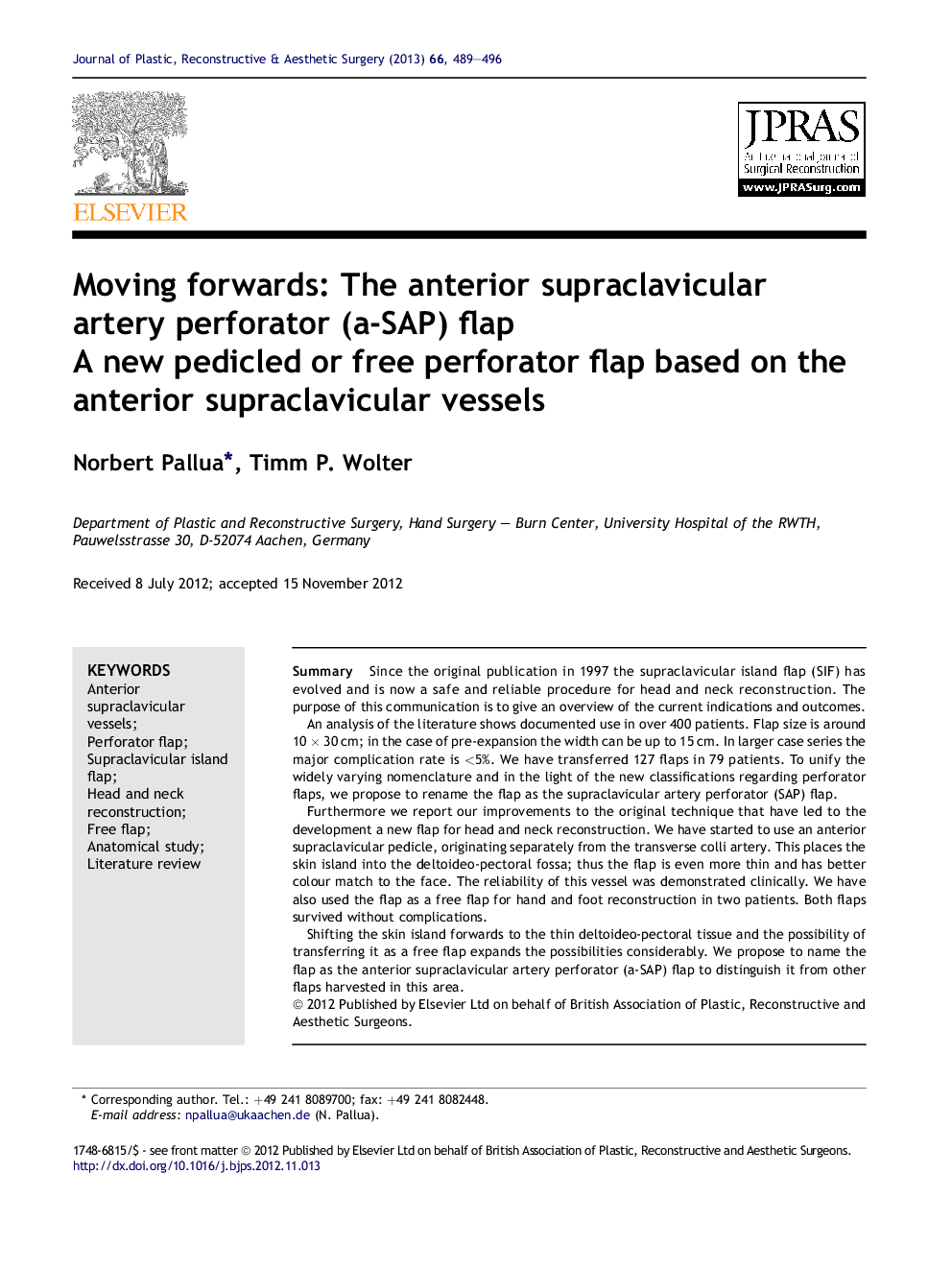| Article ID | Journal | Published Year | Pages | File Type |
|---|---|---|---|---|
| 4118409 | Journal of Plastic, Reconstructive & Aesthetic Surgery | 2013 | 8 Pages |
SummarySince the original publication in 1997 the supraclavicular island flap (SIF) has evolved and is now a safe and reliable procedure for head and neck reconstruction. The purpose of this communication is to give an overview of the current indications and outcomes.An analysis of the literature shows documented use in over 400 patients. Flap size is around 10 × 30 cm; in the case of pre-expansion the width can be up to 15 cm. In larger case series the major complication rate is <5%. We have transferred 127 flaps in 79 patients. To unify the widely varying nomenclature and in the light of the new classifications regarding perforator flaps, we propose to rename the flap as the supraclavicular artery perforator (SAP) flap.Furthermore we report our improvements to the original technique that have led to the development a new flap for head and neck reconstruction. We have started to use an anterior supraclavicular pedicle, originating separately from the transverse colli artery. This places the skin island into the deltoideo-pectoral fossa; thus the flap is even more thin and has better colour match to the face. The reliability of this vessel was demonstrated clinically. We have also used the flap as a free flap for hand and foot reconstruction in two patients. Both flaps survived without complications.Shifting the skin island forwards to the thin deltoideo-pectoral tissue and the possibility of transferring it as a free flap expands the possibilities considerably. We propose to name the flap as the anterior supraclavicular artery perforator (a-SAP) flap to distinguish it from other flaps harvested in this area.
